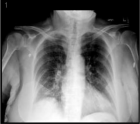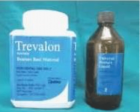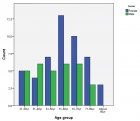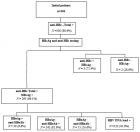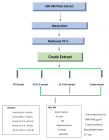Abstract
Research Article
Femoral venous closure: A single-centre retrospective analysis in real world all comers with MynxGrip® vascular closure device
Nadim Malik*, Alexander Harvard, Shamin Thirunavukarasu, Afzal Hayat, Abid Ullah, Reza Aghamohammadzadeh and Cathy Mary Holt
Published: 18 June, 2020 | Volume 5 - Issue 2 | Pages: 136-140
Background: Vascular closure devices (VCD) are routinely used to achieve haemostasis following percutaneous arterial procedures. The extravascular polyethylene-glycol based MynxGrip® device (Cardinal Health) received FDA approval for use in the closure of femoral veins, but so far limited data is available on its use, especially with concomitant use of anticoagulants.
Method: This is a retrospective analysis of data from a single-centre on the effectiveness and complication rates following the use of the MynxGrip® device for femoral venous closure in patients undergoing diagnostic/interventional (temporary pacing during balloon aortic valvuloplasty, or electrophysiology) procedures utilising 5-7F sheaths.
Results: 85 patients (mean age 74 years) underwent femoral venous closure with the MynxGrip® device. 51.8% were male. The rate of concomitant anticoagulant or antiplatelet use was 52.9%. Device deployment was 100% successful with full haemostasis in all cases. There were no major vascular complications (bleeding, thrombosis, or infections). There was one case of a minor small venous hematoma which did not require treatment. The mean length of stay was less than 1 day (67.1% patients discharged the same day) and overnight stay only indicated by interventional procedure.
Conclusion: These data support safety and efficacy of the MynxGrip® device for femoral venous closure with same-day discharge, even with concomitant aggressive antiplatelet and anticoagulant use. It has the potential for use in other large bore venous access sites.
Read Full Article HTML DOI: 10.29328/journal.jccm.1001100 Cite this Article Read Full Article PDF
Keywords:
Vascular closure device (VCD); Femoral venous closure; MynxGrip®; Anticoagulants; Antiplatelets
References
- Noori VJ, Eldrup-Jørgensen J. A systematic review of vascular closure devices for femoral artery puncture sites. J Vasc Surg. 2018; 68: 887-899. PubMed: https://pubmed.ncbi.nlm.nih.gov/30146036
- Fargen KM, Hoh BL, Mocco J. A prospective randomized single-blind trial of patient comfort following vessel closure: extravascular synthetic sealant closure provides less pain than a self-tightening suture vascular compression device. J Neurointerv Surg. 2011; 3: 219-223. PubMed: https://www.ncbi.nlm.nih.gov/pubmed/21990828
- Robertson L, Andras A, Colgan F, Jackson R. Vascular closure devices for femoral arterial puncture site haemostasis. Cochrane Database Syst Rev. 2016; 3: CD009541. PubMed: https://www.ncbi.nlm.nih.gov/pubmed/26948236
- Cox T, Blair L, Huntington C, Lincourt A, Sing R, et al. Systematic Review of Randomized Controlled Trials Comparing Manual Compression to Vascular Closure Devices for Diagnostic and Therapeutic Arterial Procedures. Surg Technol Int. 2015; 27: 32-44. PubMed: https://www.ncbi.nlm.nih.gov/pubmed/26680377
- Tsui JY, Collins AB, White DW, Lai J, Tabas JA. Videos in clinical medicine. Placement of a femoral venous catheter. N Engl J Med. 2008; 358: e30. PubMed: https://www.ncbi.nlm.nih.gov/pubmed/18579807
- Coto HA. Closure of the femoral vein puncture site after transcatheter procedures using Angio-Seal. Catheter Cardiovasc Interv. 2002; 55: 16-19. PubMed: https://www.ncbi.nlm.nih.gov/pubmed/11793489
- Maraj I, Budzikowski AS, Ali W, Mitre CA, Kassotis J. Use of vascular closure device is safe and effective in electrophysiological procedures. J Interv Card Electrophysiol. 2015; 43: 193-195. PubMed: https://pubmed.ncbi.nlm.nih.gov/25921347/
- Shaw JA, Dewire E, Nugent A, Eisenhauer AC. Use of suture-mediated vascular closure devices for the management of femoral vein access after transcatheter procedures. Catheter Cardiovasc Interv. 2004; 63: 439-443. PubMed: https://www.ncbi.nlm.nih.gov/pubmed/15558775
- Mahadevan VS, Jimeno S, Benson LN, McLaughlin PR, Horlick EM. Pre-closure of femoral venous access sites used for large-sized sheath insertion with the Perclose device in adults undergoing cardiac intervention. Heart. 2008; 94: 571-572. PubMed: https://www.ncbi.nlm.nih.gov/pubmed/17085529
- Mylonas I, Sakata Y, Salinger M, Sanborn TA, Feldman T. The use of percutaneous suture-mediated closure for the management of 14 French femoral venous access. J Invasive Cardiol. 2006; 18: 299-302. PubMed: https://www.ncbi.nlm.nih.gov/pubmed/16816433
- Rüter K, Puls M, von der Ehe K, Tichelbäcker T, Sobisiak B, et al. Preclosure of femoral vein access site with the suture-mediated Proglide device during MitraClip implantation. J Invasive Cardiol. 2013; 25: 508-510. PubMed: https://www.ncbi.nlm.nih.gov/pubmed/24088424
- Hamid T, Rajagopal R, Pius C, Clarke B, Mahadevan VS. Preclosure of large-sized venous access sites in adults undergoing transcatheter structural interventions. Catheter Cardiovasc Interv. 2013; 81: 586-590. PubMed: https://www.ncbi.nlm.nih.gov/pubmed/22431302
- Geis NA, Pleger ST, Chorianopoulos E, Müller OJ, Katus HA, et al. Feasibility and clinical benefit of a suture-mediated closure device for femoral vein access after percutaneous edge-to-edge mitral valve repair. EuroIntervention. 2015; 10: 1346-1353. PubMed: https://www.ncbi.nlm.nih.gov/pubmed/24694560
- Dou E, Winokur RS, Sista AK. Venous Access Site Closures Using the VASCADE Vascular Closure System. J Vasc Interv Radiol. 2016; 27: 1885-1888. PubMed: https://www.ncbi.nlm.nih.gov/pubmed/27886954
- Hmoud H, Sturla M, Delucia L, DeGregorio L, DeGregorio J. Closure of mid-bore venotomies with VASCADE VCD after right and left heart catheterization. Catheter Cardiovasc Interv. 2019; 93: 626-630. PubMed: https://www.ncbi.nlm.nih.gov/pubmed/30280486
- Srivatsa SS, Srivatsa A, Spangler TA. Mynx vascular closure device achieves reliable closure and hemostasis of percutaneous transfemoral venous access in a porcine vascular model. J Invasive Cardiol. 2015; 27: 121-127. PubMed: https://www.ncbi.nlm.nih.gov/pubmed/25661765
- Ben-Dor I, Craig P, Torguson R, Rogers T, Buchanan KD, et al. MynxGrip® vascular closure device versus manual compression for hemostasis of percutaneous transfemoral venous access closure: Results from a prospective multicenter randomized study. Cardiovasc Revasc Med. 2018; 19: 418-422. PubMed: https://www.ncbi.nlm.nih.gov/pubmed/29656937
- Hutchings D, Hayat A, Karunakaran A, Malik N. Success, Safety, and Efficacy of the Mynx Femoral Closure Device in a Real-World Cohort: Single-Center Experience. J Invasive Cardiol. 2016; 28: 104-108. PubMed: https://pubmed.ncbi.nlm.nih.gov/26945253
- Verma D, Lee N, Tandar A, Badger T, Dranow E, et al. A Propensity Score Analysis of Venous Access Closure Using Extravascular Closure Device In High Risk Patients. J Am College Cardiol. 2014; 64: B248. https://core.ac.uk/download/pdf/82597051.pdf
- Waksman R, Ben-Dor I, Rogers T, Torguson R, Buchanan K, et al. Mynxgrip vascular closure device is safe and effective for hemostasis of percutaneous transfemoral venous access closure. J Am College Cardiol. 2018; 71: 1432. https://www.onlinejacc.org/content/71/11_Supplement/A1432
- Fields JD, Liu KC, Lee DS, Gonda SJ, Dogan A, et al. Femoral artery complications associated with the Mynx closure device. AJNR Am J Neuroradiol. 2010; 31: 1737-1740. PubMed: https://pubmed.ncbi.nlm.nih.gov/20538826/
- Islam MA, George AK, Norris M. Popliteal artery embolization with the Mynx closure device. Catheter Cardiovasc Interv. 2010; 75: 35-37. PubMed: https://www.ncbi.nlm.nih.gov/pubmed/19708082
- Noor S, Meyers S, Curl R. Successful reduction of surgeries secondary to arterial access site complications: a retrospective review at a single center with an extravascular closure device. Vasc Endovascular Surg. 2010; 44: 345-349. PubMed: https://www.ncbi.nlm.nih.gov/pubmed/20484072
- Gupta A, Perera T, Ganesan A, Sullivan T, Lau DH, et al. Complications of catheter ablation of atrial fibrillation: a systematic review. Circ Arrhythm Electrophysiol. 2013; 6: 1082-1088. PubMed: https://www.ncbi.nlm.nih.gov/pubmed/24243785
Similar Articles
-
Use of Rivaroxaban and Apixaban, Two Non-Vitamin K Antagonist Oral Anticoagulants (NOACs), in Renally Impaired Patients - the limits of our knowledgeKenneth T Moore*,Maria Langas. Use of Rivaroxaban and Apixaban, Two Non-Vitamin K Antagonist Oral Anticoagulants (NOACs), in Renally Impaired Patients - the limits of our knowledge. . 2018 doi: 10.29328/journal.jccm.1001026; 3: 049-051
-
Femoral venous closure: A single-centre retrospective analysis in real world all comers with MynxGrip® vascular closure deviceNadim Malik*,Alexander Harvard,Shamin Thirunavukarasu,Afzal Hayat,Abid Ullah,Reza Aghamohammadzadeh,Cathy Mary Holt. Femoral venous closure: A single-centre retrospective analysis in real world all comers with MynxGrip® vascular closure device. . 2020 doi: 10.29328/journal.jccm.1001100; 5: 136-140
Recently Viewed
-
Sleep quality and Laboratory Findings in Patients with Varicose Vein Leg PainIbrahim Acır*, Zeynep Vildan Okudan Atay, Mehmet Atay, Vildan Yayla. Sleep quality and Laboratory Findings in Patients with Varicose Vein Leg Pain. J Neurosci Neurol Disord. 2023: doi: 10.29328/journal.jnnd.1001077; 7: 022-026
-
The Impacts of Angiotensin Receptor Blockers (ARBs) or Angiotensin-Converting Enzyme Inhibitors (ACEIs) on Patients with Stereotactic Body Radiation Therapy (SBRT) for Early-Stage NSCLCSaber A Amin, Morshed Alam, Bangchen Wang, Weining Zhen, Chi Lin, Apar Kishor Ganti, Vinicius Ernani, Alissa Marr, Tony JC Wang, Simon K Cheng, Michael Baine, Chi Zhang*. The Impacts of Angiotensin Receptor Blockers (ARBs) or Angiotensin-Converting Enzyme Inhibitors (ACEIs) on Patients with Stereotactic Body Radiation Therapy (SBRT) for Early-Stage NSCLC. J Radiol Oncol. 2023: doi: 10.29328/journal.jro.1001050; 7: 033-041
-
The Role of Advanced Imaging in Paediatric Cardiology: Basic Principles and IndicationsMaria Kavga*, Tristan Ramcharan, Kyriaki Papadopoulou-Legbelou. The Role of Advanced Imaging in Paediatric Cardiology: Basic Principles and Indications. J Cardiol Cardiovasc Med. 2023: doi: 10.29328/journal.jccm.1001155; 8: 065-071
-
A Study of Complete and Incomplete Reactions of 12C + 169Tm System at Energy Range ≈ 4.16 –7.5 MeV/NucleonGetahun Kebede*. A Study of Complete and Incomplete Reactions of 12C + 169Tm System at Energy Range ≈ 4.16 –7.5 MeV/Nucleon. Int J Phys Res Appl. 2023: doi: 10.29328/journal.ijpra.1001061; 6: 121-127
-
Early Outcomes of a Next-Generation Balloon-Expandable Transcatheter Heart Valve - The Myval System: A Single-Center Experience From SerbiaDarko Boljevic*, Milovan Bojic, Mihajlo Farkic, Dragan Sagic, Sasa Hinic, Dragan Topic, Milan Dobric, Jovana Lakcevic, Marko Nikolic, Stefan Veljkovic, Matija Furtula, Jelena Kljajevic, Aleksandra Nikolic. Early Outcomes of a Next-Generation Balloon-Expandable Transcatheter Heart Valve - The Myval System: A Single-Center Experience From Serbia. J Cardiol Cardiovasc Med. 2023: doi: 10.29328/journal.jccm.1001156; 8: 072-080
Most Viewed
-
Evaluation of Biostimulants Based on Recovered Protein Hydrolysates from Animal By-products as Plant Growth EnhancersH Pérez-Aguilar*, M Lacruz-Asaro, F Arán-Ais. Evaluation of Biostimulants Based on Recovered Protein Hydrolysates from Animal By-products as Plant Growth Enhancers. J Plant Sci Phytopathol. 2023 doi: 10.29328/journal.jpsp.1001104; 7: 042-047
-
Feasibility study of magnetic sensing for detecting single-neuron action potentialsDenis Tonini,Kai Wu,Renata Saha,Jian-Ping Wang*. Feasibility study of magnetic sensing for detecting single-neuron action potentials. Ann Biomed Sci Eng. 2022 doi: 10.29328/journal.abse.1001018; 6: 019-029
-
Sinonasal Myxoma Extending into the Orbit in a 4-Year Old: A Case PresentationJulian A Purrinos*, Ramzi Younis. Sinonasal Myxoma Extending into the Orbit in a 4-Year Old: A Case Presentation. Arch Case Rep. 2024 doi: 10.29328/journal.acr.1001099; 8: 075-077
-
Pediatric Dysgerminoma: Unveiling a Rare Ovarian TumorFaten Limaiem*, Khalil Saffar, Ahmed Halouani. Pediatric Dysgerminoma: Unveiling a Rare Ovarian Tumor. Arch Case Rep. 2024 doi: 10.29328/journal.acr.1001087; 8: 010-013
-
Physical activity can change the physiological and psychological circumstances during COVID-19 pandemic: A narrative reviewKhashayar Maroufi*. Physical activity can change the physiological and psychological circumstances during COVID-19 pandemic: A narrative review. J Sports Med Ther. 2021 doi: 10.29328/journal.jsmt.1001051; 6: 001-007

HSPI: We're glad you're here. Please click "create a new Query" if you are a new visitor to our website and need further information from us.
If you are already a member of our network and need to keep track of any developments regarding a question you have already submitted, click "take me to my Query."






